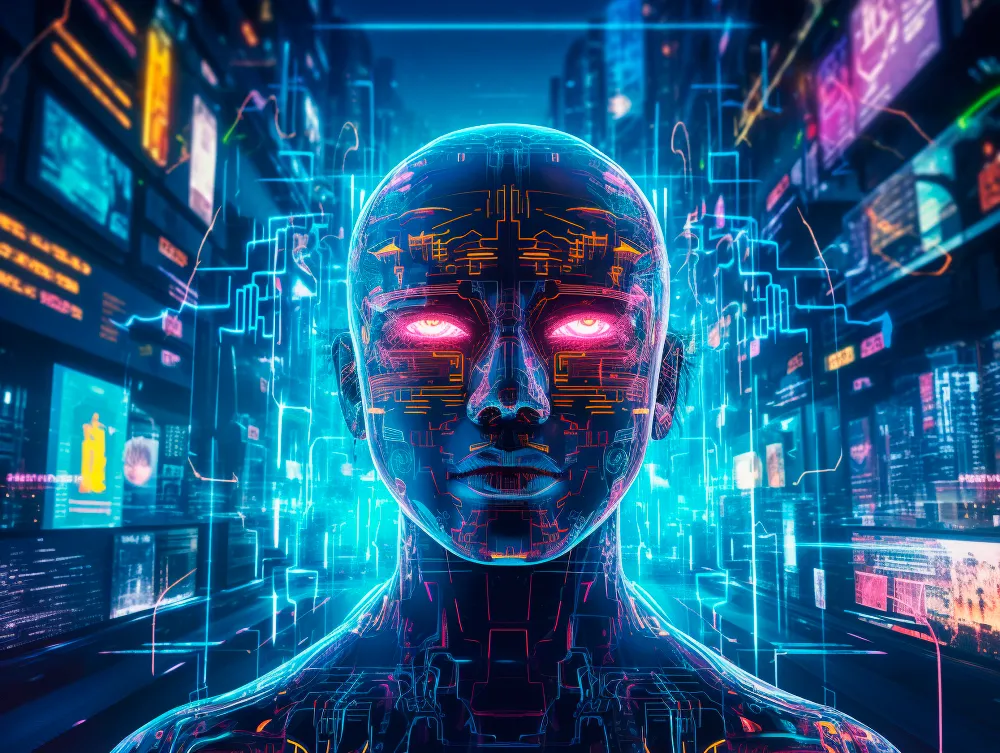Artificial Intelligence (AI) is a buzzword that has become synonymous with innovation and the future of technology. From self-driving cars to voice-activated virtual assistants, AI is transforming the way we live, work, and interact with the world. But what exactly is AI, and why is it so important? In this blog post, we will explore the basics of AI, including its definition, types, key components, and the profound impact it has on various industries.
Defining Artificial Intelligence
Artificial Intelligence, commonly known as AI, refers to the simulation of human intelligence in machines that are designed to think and learn like humans. AI systems are capable of performing tasks that typically require human intelligence, such as recognizing speech, making decisions, solving problems, and understanding natural language. The ultimate goal of AI is to create machines that can function autonomously and adapt to new situations, much like a human would.
AI is a broad and interdisciplinary field that combines elements of computer science, mathematics, cognitive science, and engineering. It encompasses a wide range of technologies and approaches, all aimed at enabling machines to perform tasks that would normally require human cognition.
The Three Main Types of AI
AI is often categorized into three distinct types based on its capabilities: Narrow AI, General AI, and Superintelligent AI.
- Narrow AI: Also known as Weak AI, Narrow AI is designed to perform a specific task or a narrow set of tasks. It is the most common form of AI in use today. Examples of Narrow AI include facial recognition systems, recommendation algorithms on streaming platforms, and language translation services. While Narrow AI can outperform humans in its specialized tasks, it lacks the ability to perform tasks outside its predefined scope.
- General AI: General AI, or Strong AI, refers to an AI system that possesses general cognitive abilities, much like a human. A General AI system would be capable of learning, reasoning, and applying knowledge across a wide range of tasks. Unlike Narrow AI, which is limited to specific functions, General AI would have the flexibility to perform any intellectual task that a human can do. Although General AI remains a theoretical concept, it is the ultimate goal for many AI researchers.
- Superintelligent AI: Superintelligent AI is a hypothetical form of AI that surpasses human intelligence across all domains. This type of AI would not only excel in specific tasks but would also possess the ability to outperform humans in areas such as creativity, problem-solving, and emotional intelligence. While Superintelligent AI is currently speculative, it is often discussed in the context of potential risks and ethical considerations.
Key Components of AI
AI systems rely on several key components and technologies to function effectively. These include:
- Machine Learning (ML): A subset of AI that focuses on enabling machines to learn from data and improve their performance over time. Machine learning algorithms analyze large datasets to identify patterns and make predictions, allowing AI systems to adapt and evolve based on new information.
- Neural Networks: Modeled after the human brain, neural networks are a series of interconnected nodes that process and analyze data. They are particularly effective for tasks such as image recognition, natural language processing, and speech recognition.
- Natural Language Processing (NLP): NLP enables machines to understand, interpret, and generate human language. This technology powers chatbots, virtual assistants, and language translation tools, allowing for more natural and intuitive interactions between humans and machines.
- Robotics: While not limited to AI, robotics often incorporates AI to enable machines to perform physical tasks autonomously. AI-powered robots can navigate environments, manipulate objects, and perform complex tasks without human intervention.
The Impact of AI Across Industries
AI is having a transformative impact on a wide range of industries, driving innovation, efficiency, and new possibilities. In healthcare, AI is being used to diagnose diseases, personalize treatment plans, and accelerate drug discovery. In finance, AI algorithms are optimizing investment strategies, detecting fraud, and automating customer service. In manufacturing, AI-powered robots are improving production processes and reducing costs.
However, the widespread adoption of AI also raises important ethical and societal questions. Concerns about job displacement, data privacy, and algorithmic bias are becoming increasingly relevant as AI systems become more integrated into everyday life. It is essential to address these challenges to ensure that AI is developed and deployed responsibly.
Conclusion
Artificial Intelligence is a rapidly advancing field that holds the potential to revolutionize every aspect of our lives. By understanding the basics of AI, including its definition, types, and key components, we can better appreciate its capabilities and the opportunities it presents. As AI continues to evolve, it




















